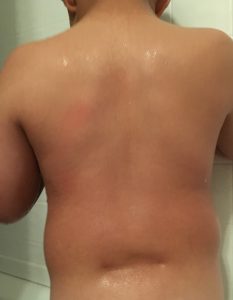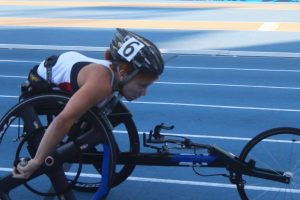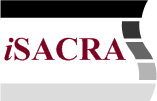 Neurology is one of the types of treatment areas related to the spine and spinal cord for children with sacral agenesis/caudal regression syndrome. It is important to understand that these treatments are not a cure for the condition and do not replace missing spine or spinal cord or nerves, but they may address problems of spinal curves or tethered cords, two issues that are seen in individuals with SA/CRS.
Neurology is one of the types of treatment areas related to the spine and spinal cord for children with sacral agenesis/caudal regression syndrome. It is important to understand that these treatments are not a cure for the condition and do not replace missing spine or spinal cord or nerves, but they may address problems of spinal curves or tethered cords, two issues that are seen in individuals with SA/CRS.
Spinal curve (kyphosis, lordosis, scoliosis) and concern for compression of organs
Children born with large portions of the spine absent at the lumbar and/or into the thoracic region are sometimes considered at risk for compression of organs such as the lungs. This concern may be due to lack of familiarity with this condition on the part of doctors, since those for whom no correction is attempted appear to manage well in spite of sometimes quite significant spinal curve. Individuals who have very high levels of spine missing, well into the T-5 through T-10 range, may appear to be at risk for compression since their pelvis presses up into the rib cage when they sit. However, they usually experience only minor issues with compression of organs such as the lungs or stomach capacity and this issue is reportedly easily relieved just from shifting body position. No surgical intervention or bracing appears necessary. Often these individuals present with severe lordosis and partial kyphosis of the spine (an inward and outward curve), however, they are able to sit and move about independently. They may have tender or sensitive spots along the spine, but these are addressed simply through body position in sitting or laying down to avoid pressure on sensitive spots. In light of the concerns doctors express about lung compression or other organ compromise, it may be surprising to learn that some individuals with SA/CRS at high levels and quite severe lordosis/kyphosis curves compete at the elite level in athletics such as wheelchair race marathons, triathlons and downhill skiing, all of which require excellent lung and heart function.

Wheelchair seating with posture supports are typically not recommended or effective to address spine support for persons with SA/CRS. For more information about wheelchair seating, see Recommendations for wheelchair fitting for children and adults.
Neither surgery nor bracing is recommended except in cases where there is proven compromise to organs. In this case, sometimes bracing is attempted with a torso brace but that is rarely effective. Surgical rods are sometimes attempted, but there are multiple complications with this surgery for children with SA/CRS, often including infection of the rods, skin breakdown around the rods, and frequent breaking of the rods. In a population of almost 1000 individuals with SA/CRS, there are only a handful who have undergone surgery for rods with successful results. Individuals without this surgery appear to have good results over a lifetime but should maintain good diet and exercise in order to prevent obesity.
The issue of much more concern is when the spine begins to curve to the right or left (scoliosis) In this case, sometimes bracing is used. A cast is made of the child’s torso and then a plastic brace is made from the mold. It attaches with velcro and is intended to apply pressure to the spine to keep the spinal curve from worsening. with SA/CRS, it is difficult to brace something that does not connect at both ends, and the spine of children with SA/CRS is often not connected at all to the pelvis. Usually, however, the spine of children with SA/CRS does not change over time. The long term impact of those with scoliosis is unknown. This link may be helpful:
Lumbopelvic fusion with a new fixation technique in lumbosacral agenesis: three cases
This topic is further discussed in the resource section for doctors
Tethered cord
A third issue seen in those with SA/CRS where the cord does not end bluntly is tethered cord. Sometimes tethered cord is visible in an MRI but is not symptomatic and not treated. In other cases, treatment involved a surgical procedure. For information about tethered cord surgery, this link may be helpful: Tethered cord surgery.
